|
Connection issues |
|
We are still waiting for confirmation but
the recent connection issues appear to have been caused by
a problem at our certificate provider. Members were unable
to fetch an updated CRL (certificate revocation list) from
their servers. This check is performed daily when using
SSL. The problem has been rectified. Users may wish to restore their original settings at Tools >> Internet Options >> Advanced >> Security, if they had Check for server certificate revocation selected. Restart your computer for any changes to take effect. You will also need to create firewall permission for TCP connection to the certificate provider: IP address 195.92.253.137 (port 80). |
Trading Diary
June 26, 2004
Expect a test of support at 10300. If that fails we are likely to see a test of the primary 10000 support level. If that fails ... well, then we have a reversal of the primary trend, but this is not yet a high probability.
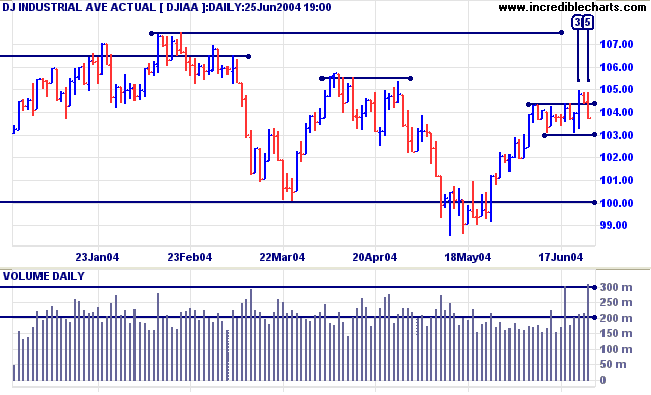
Twiggs Money Flow (not shown), however, continues to signal distribution.
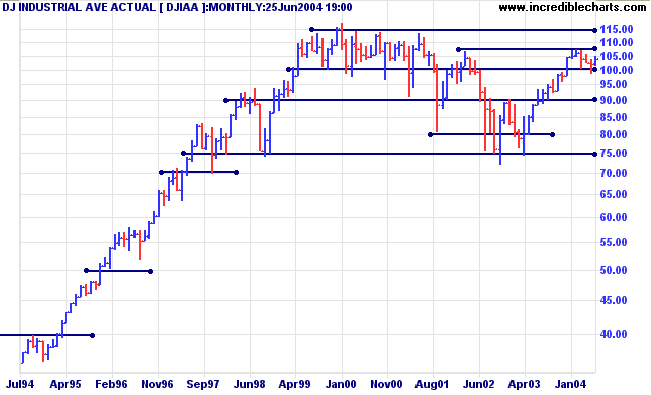
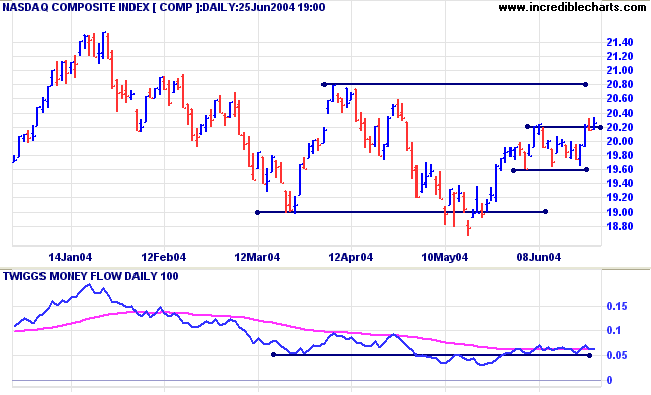
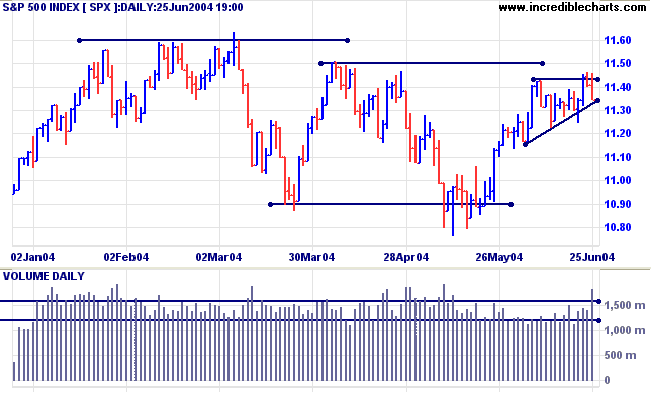
Twiggs Money Flow continues to signal distribution.
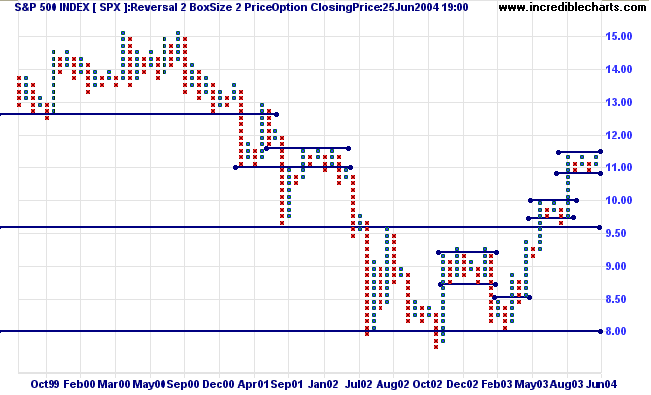
The yield on 10-year treasury notes is consolidating above support at 4.50%. The Fed is expected to raise interest rates by a quarter percent at its Wednesday meeting. A healthy yield differential (10-year T-notes minus 13-week T-bills) of 3.4% reflects imminent rates rises.
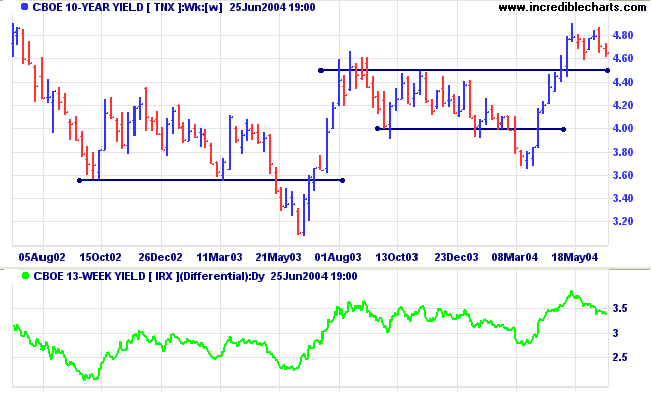
New York: Spot gold closed up at $402.10, above the previous high and confirming an intermediate up-trend. Expect a test of resistance at the April high of 427.25.
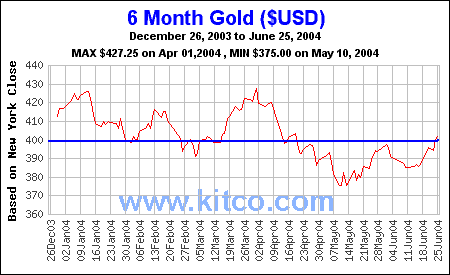
Incredible Charts - now with US
Data
|
FREE trial - Click Here
Expect continued selling until the end of the June 30 financial year as fund managers bury their dead (sell off non-performing stocks that they do not want to appear in their balance sheets) and private investors realize capital losses.
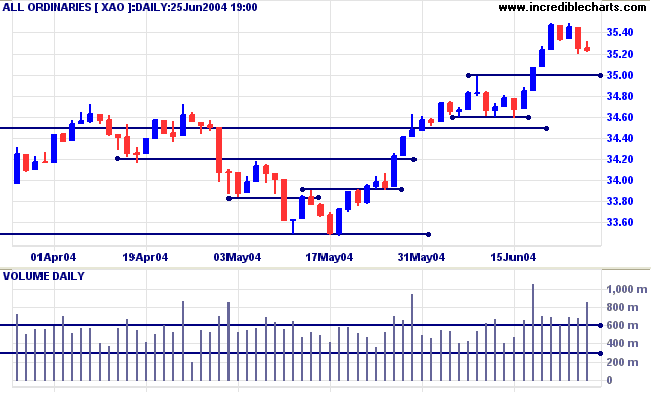
Twiggs Money Flow signals strong accumulation.
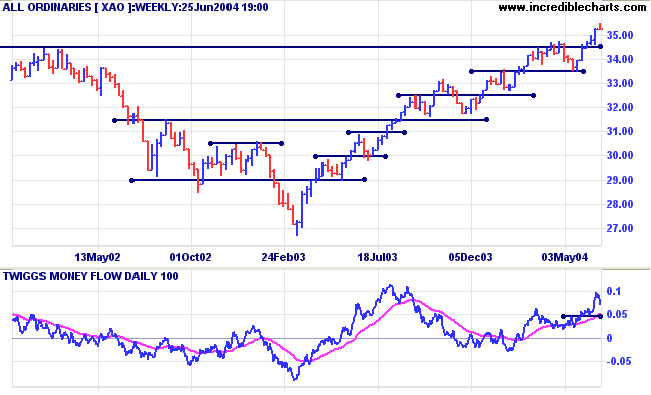
Trading breakouts can be a hazardous business, mainly because of the large number of false breakout signals. A typical example would be the aptly-named GAP Inc. (The Greater Atlantic and Pacific Tea Company - NYSE) charted below. I counted 20 false breakouts over a 10-year period (and there are probably more if you examine the chart closely). GAP is one of a minority of stocks where there has been no financial restructuring requiring dilution adjustments, making it fairly easy to identify historic support and resistance levels (at round numbers).
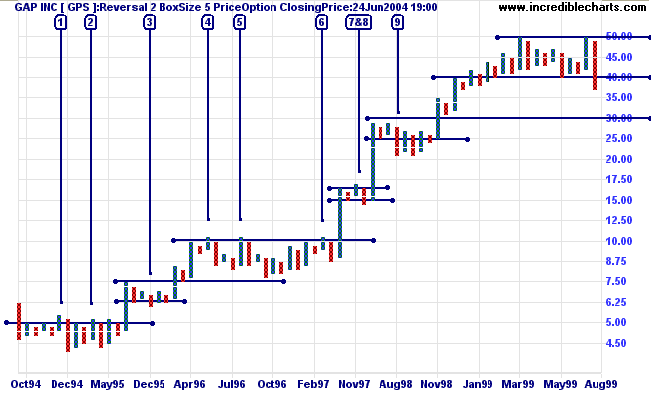
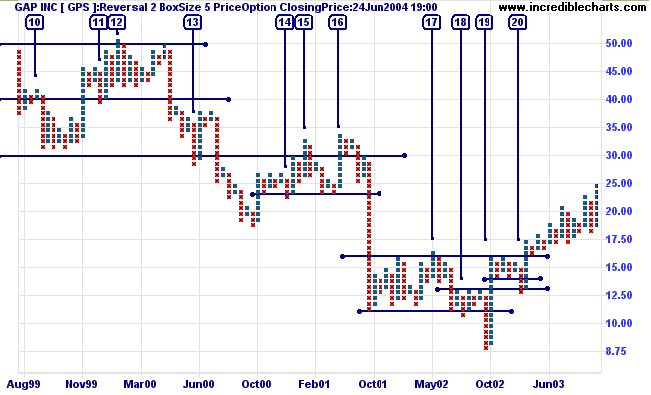
To explain the cause of false breaks (or false catapults as they were referred to in some of the early literature) let us first re-visit the basics:
A trend that goes straight up without any major corrections or consolidations (a spike) will be prone to failure. The higher that price climbs, the more anxious stock-holders become about locking in their profits: buying support has not been tested. Fearing a major correction, many will join the ranks of sellers at the first signs of a reversal. And fear is a powerful motivator: the further price falls, the more sellers will be panicked into selling, until the devil takes the hindmost.
A consolidation or correction has the opposite effect: it instills confidence in stock-holders. Higher prices are tested by sellers and buyers commitment is proven, establishing a solid base for further gains.
Support and resistance at these consolidations are not the brick walls that some would have us believe. They can be fairly elastic: absorbing the energy of a rally or correction before returning to their original position. Rather like the strings of a tennis racket. We may see several forays across a line of support or resistance, all of which are repulsed, before sufficient energy is accumulated to break through.
Some of these forays are initiated by professional (short-term) traders in attempt to shake out stop-losses and accumulate a position at lower prices. Brokers also stand to benefit from the additional brokerage when buy-stops are triggered as price breaks through a major resistance level. And they get a second bite at your trading capital when price retreats, triggering stop-losses.
Placing wider stops, below the opposite border of the consolidation pattern, does not always help. And when your stops are triggered, the losses will be far more expensive.
A false break is likely to be followed by a test of the opposite border of the consolidation pattern - and you may face a similar situation there as well. See [7] and [8] on the chart below.
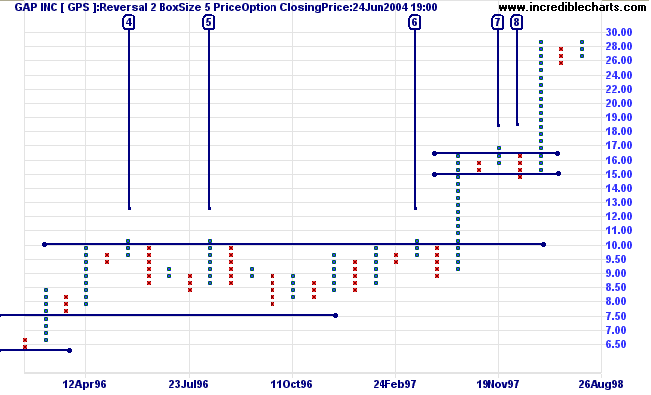
Was Mohammed Ali ever upstaged?
Ali was on a plane when a stewardess asked him to fasten his seat belt.
He replied "Superman don't need no seat belt".
The stewardess told the champ "Superman don't need no plane!"
Click here to access the Trading Diary Archives.
Back Issues

Author: Colin Twiggs is a former investment banker with almost 40 years of experience in financial markets. He co-founded Incredible Charts and writes the popular Trading Diary and Patient Investor newsletters.
Using a top-down approach, Colin identifies key macro trends in the global economy before evaluating selected opportunities using a combination of fundamental and technical analysis.
Focusing on interest rates and financial market liquidity as primary drivers of the economic cycle, he warned of the 2008/2009 and 2020 bear markets well ahead of actual events.
He founded PVT Capital (AFSL No. 546090) in May 2023, which offers investment strategy and advice to wholesale clients.
